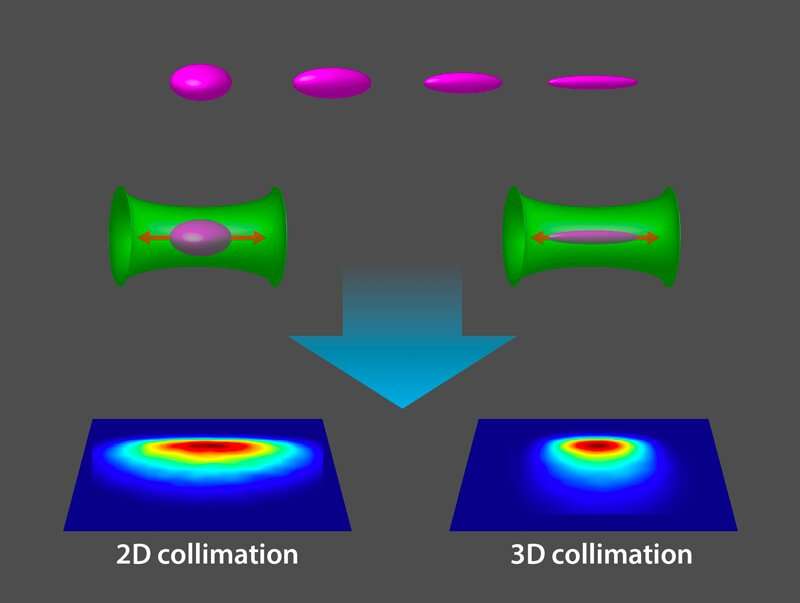October 13, 2021 report
New record set for lowest temperature—38 picokelvins

A team of researchers affiliated with several institutions in Germany and two in France has set a new record for the lowest temperature ever recorded in a lab setting—38 picokelvins. In their paper published in the journal Physics, the group describes their work with a time-domain matter-wave lens system. Vincenzo Tamma with the University of Portsmouth has published a Viewpoint article in the same journal issue discussing the work done by the team in Germany.
Prior research has suggested that the lowest possible temperature that can exist is absolute zero—0 Kelvin. Prior research has also shown that as substances grow colder, some begin to see a change in their properties. The liquid form of helium, for example, becomes a superfluid at very low temperatures. Such changes in the properties of substances have been the subject of much research, as have efforts aimed at creating colder environments for testing. In this new effort, the researchers have created the coldest environment ever by using a lens made out of a quantum gas.
The work employed a quantum gas lens and the famous Bremen Drop Tower in Bremen, Germany, which has a 122-meter-high drop tube. They started by creating a gas cloud at the top of the tower made of rubidium atoms. The cloud was held in place by a magnetic trap that also served as a matter-wave lens that focused the atoms in the cloud into a Bose-Einstein condensate, making the cloud grow cold. The researchers then turned the trap off, allowing the cloud to expand in every direction (and making it even colder) as it fell down the length of the tower. Detectors on the sides of the tower measured the kinetic energy of the atoms in the cloud as they passed by. The process lasted only two seconds, but that was enough to show it produced a record cold environment. The researchers note that small changes in the setup, such as reducing the number of atoms in the cloud, could possibly lead to even lower temperatures. Tamma notes that the setup created by the team in Bremen could likely be used to test gravity theories at the quantum level.
More information: Christian Deppner et al, Collective-Mode Enhanced Matter-Wave Optics, Physical Review Letters (2021). DOI: 10.1103/PhysRevLett.127.100401
Vincenzo Tamma, 3D Collimation of Matter Waves, Physics (2021). DOI: 10.1103/Physics.14.119
Journal information: Physical Review Letters
© 2021 Science X Network





















